The Holy Land is a fusion of cultures. It is the land where three religions of the world were born, Judaism, Christianity and Islam. It has always amazed me that these three religions have a common history as recorded in the Old Testament, originate from the same land, the western end of Asia. I could not believe that we had set foot on this Holy Land.
We set out on our first tour of the Holy land with an enthusiastic tour guide who apparently had walked straight out the Old Testament, with a Biblical name Itamor. He introduced himself by handing out a quiz: Who was Itamor? Obviously, everyone failed. Mosses had a brother Aaron, Ithamor was the youngest son of Aaron, nephew of Mosses. Aaron and his male heirs were promised the exclusive rights to the High Priesthood. Ithamor followed Aaron as the high Priest.
We first sighted Jerusalem from an Observation Point, high on the hills surrounding the city as we approached from Tel-Aviv. The most striking structure on the Temple Mount in the Old city of Jerusalem is the Golden Dome, Dome of the Rock, the Second Temple in Judaism.
The rock is believed in Judaism to be the spot where God created the first human, Adam. It is also believed that it is this site where Abraham attempted to sacrifice his son Isaac. It is said to have a divine presence and it is towards which the Jews turn to pray.
The Al Aqsa Mosque stands next to it, in the shadow of the Dome and less prominent from the Observation point, with blue-grey domes. It is important to Muslims as it is believed that Prophet Mohammad’s journey to heaven began from this rock.
 |
| Sighting Blue Domes of Church of Sepulchre |
Not far from these holy shrines we spotted two blue domes of the Church of the Holy Sepulchre, the most holy place of Christianity. Christ was crucified and resurrected on this spot, originally located outside the city of Jerusalem. This was known as Mount Calvary or Golgotha.
 |
| Jewish Cemetery on Mount Olive |
Mount Olive forms a high mountain ridge on the East and adjacent to the Old city of Jerusalem. The Mount was used as a Jewish Cemetery which had over 150 thousand graves. According to Itamor there were three conditions to be buried there: you had to be Jewish, you had to be rich and you had to be dead!!
 |
| Church of Mary of Magdalene on Mount Olive |
To the Christians Mount Olive is considered the site from which Jesus ascended into heaven after resurrection, the Church of Ascension. The Garden of Gethsemane at the foothills of Mount Olive is where it is said Jesus went to pray immediately after the Last Supper with his disciples on the night before his crucifixion. It was after this that he was betrayed by the disciple Judas.
Above this Garden on Mount Olive we saw the church of Mary of Magdalene. She is considered to be the first to see Jesus Christ after his resurrection on this mount.
 |
| The Great Wall between Israel and Palestine |
Itamor decided we would do the tour of Holy Sites chronologically. We proceeded to Bethlehem the site of the birth of Christ. The city of Bethlehem is in the Palestine territory and a great wall divides Israel and Palestine. According to Israeli law Israeli Jews cannot enter Palestine, except for licensed tourist guides and drivers. Israeli Arabs can, however, enter Palestine. The great wall was also covered with graffiti.
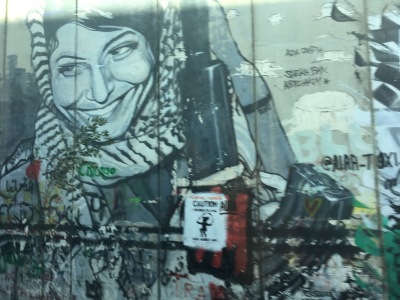 |
Graffiti on the Great Wall, Palestine
|
 |
| Graffiti on the Great Wall, Palestine |
Bethlehem
We entered Bethlehem and went straight to the Church of Nativity the site where Jesus was born in a manger. I had read on the tourist sites that the crowds at the Church of Nativity were so great that it was sometimes closed or the wait could be up to three hours. My greatest fear was that we would not be bale to enter the Church. But fortunately as we were visiting just before the Christmas season, we were in luck. The church was almost empty.
 |
| Church of Nativity, Bethlehem |
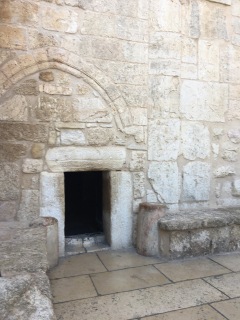 |
| Entrance to Church of Nativity |
 |
| Church of Nativity |
The entrance to this most important Church of Christianity was a small hole in the wall. You bend down to enter in all humility. We are only a dot, a blip in this universe.
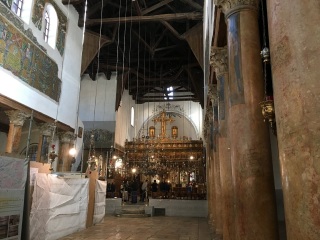 The Church of Nativity was built, destroyed and rebuilt, over the cave, the site of the birth of Jesus. In comparison to the Cathedrals in the Vatican and other countries this was a modest little church. A true remembrance of the life that Jesus led.
The Church of Nativity was built, destroyed and rebuilt, over the cave, the site of the birth of Jesus. In comparison to the Cathedrals in the Vatican and other countries this was a modest little church. A true remembrance of the life that Jesus led.
The new Palestinian guide, Kamil, told us that caves were where people lived in those ancient times. It was their homes. Only the rich and Kings lived in houses that were built.
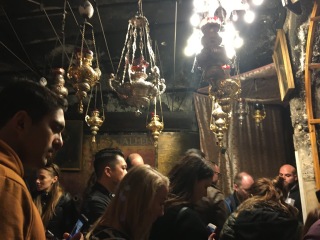 |
| Devotees inside the Cave, Church of Nativity |
Below this alter was the cave and again the entrance was a small door to the side. We waited patiently for a few minutes while the faithful prayed at this holy site.
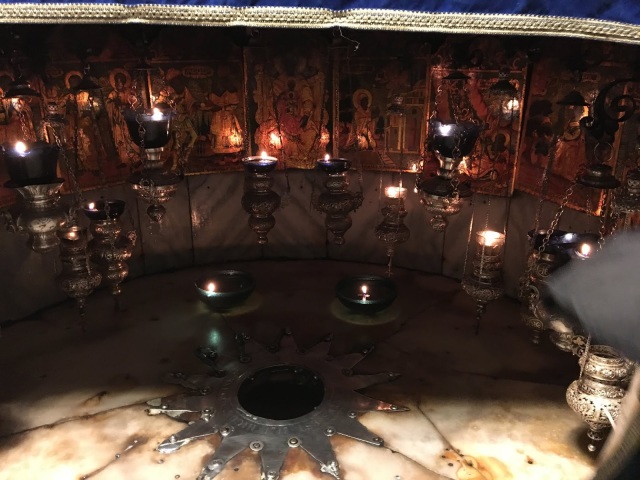 |
| Place of the Birth of Jesus, Bethlehem |
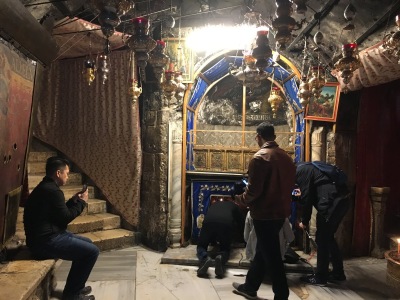
 |
| St. Joseph, father of Jesus, in The Manger
|
Adjacent to the Church of Nativity stands the Church of St. Catherine, a Catholic church. It is from this church that the Christmas Mass is held and beamed across the world.

This church built in 1882 stand on the ruins of a Crusader church and monastery. A narrow stairway leads into complex web of caves and rock cut chambers. A number of chapels are housed in this underground complex.
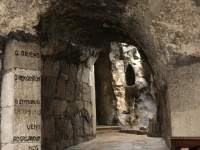
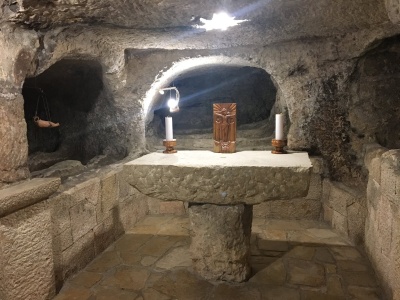
Beneath the Church of Nativity, with access from the Church of St. Catherine are the Caves of St. Jerome. St. Jerome spent 30 years translating the Scriptures from Hebrew and Greek to Latin. Beneath the alter of St. Catherine is the little Chapel to St. Jerome.
The houses in Bethlehem and Jerusalem are built of local whitish limestone. The hill sides are packed with these little white houses, a scene I have not seen elsewhere in the world. In Jerusalem there is a law that the outside of the house have to be of limestone.
Jerusalem
From Bethlehem we returned to Jerusalem. We entered the Old City of Jerusalem through the Jaffa Gate. We walked thorough the small lanes of Jerusalem following the Stations of the Cross.


Via Dolorosa, ‘The Way of Grief’ is the 14 Stations of the Cross follow the path that Jesus took carrying the cross on his way to Mt Calvary to be crucified.
Station V: The spot where Jesus fell carrying the cross. His disciple is said to have carried the cross for him from here.
The hand of Jesus is said to have fallen on the wall beside this spot and it left a deep impression on the wall. To this day devotees place their hand in this spot to feel and get the blessing of Christ.
Station VI: The spot where Veronica wiped Jesus’ face with a cloth and the impression of his face was laid on the cloth.
Station VII: Jesus falls for the second time.
|
A feeling of great joy filled my heart and tears came to my eyes as I knelt and touched the spot where Jesus was born. A Star of Bethlehem has been placed there on the floor. It was a tiny place where Jesus was laid. The cave was just a little room. There was a depiction of The Manger with Father Joseph watching over Baby Jesus in a crib. There was a painting of the three wise men, the Magi, who followed the star of Bethlehem and came from the far east to worship the ‘King of the Jews’.
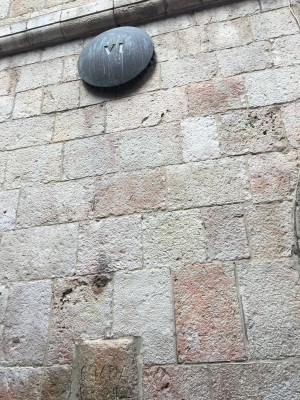
The city of Jerusalem was small town and Christ was crucified outside the city on Mount Calvary or Golgotha. In the Sixteenth Century the city was broadened and a wall was constructed to enclose Mount Calvary. So now the site of the crucifixion and the last five stations of the cross are within the Church of Sepulchre.
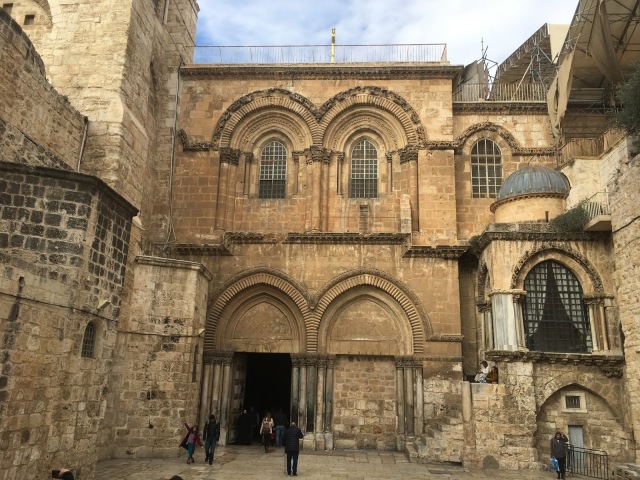 |
| Church of Sepulchre, Jerusalem |
Station 10: Jesus’s robes are removed. Station 11: Jesus is nailed to the Cross
 |
| Station 10: De-robing |
 |
| Station 11: Jesus is nailed to the cross |
 |
| Rock of Mount Calvary |
Station 12: Jesus is nailed to the cross.It is said that the blood of Jesus fell on the rock below and created a permanent impression in the crevice of this rock.
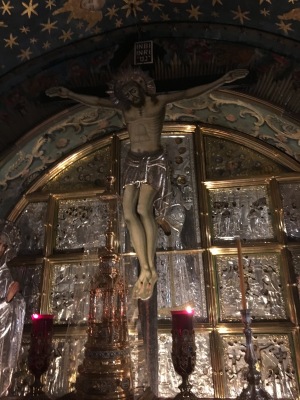 |
| Station 12: Crucifixion |
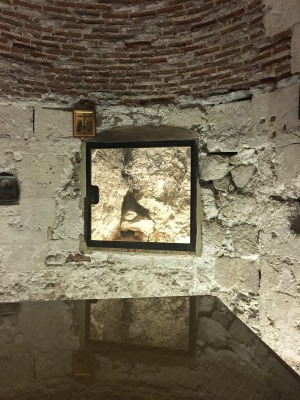 |
| The blood of Jesus streamed down this rock and created a permanent impression in red. |
Station 13: Jesus was brought down from the cross and anointed with Olive Oil.

 |
| Devotees pray at the Stone on which Jesus was laid and anointed with Olive Oil |
The stone on which he was laid and anointed exists and devotees pray at this stone.
Station 14: The body of Jesus was laid in a cave from which he was resurrected on the third day.
A monument has been built over the cave in which Jesus was laid. 
It was a magical journey we took through the stations of the cross. The journey through the last five stations in the Church of Sepulchre was an experience of a lifetime.
Jerusalem is a mutlicultural city divided into 4 quarters. We left the Christian quarter, walked through the Muslim Quarter and arrived at the Jewish Quarter of the old city.
 |
| Dome of the Rock and Al Aqsa Mosque Dome behind the Western Wall |
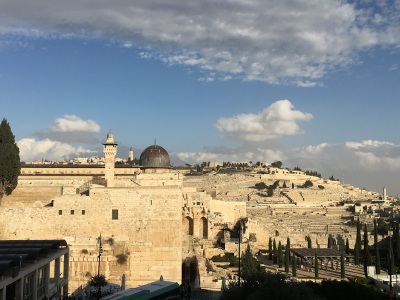
The Western Wall, also called the Wailing Wall, circles the Dome of the Rock, Second Temple of the Jews and and the Al Aqsa Mosque. With restrictions to enter the Temple Mount, this wall is the closest to the Temple and used by Jews to pray. There are separate sections for men and women to pray.
We walked through this Jewish Quarter and arrived at the Armenian Quarter. The Armenians are Christians, but of a different denomination.
We were fortunate to arrive in time for an active service being conducted in the Armenian Church. The service was similar to the Russian Orthodox Church and the familiar Syrian Christian Orthodox Church. There were very few people in the church.
And so ended our tour of the Old City of Jerusalem, a walking tour through the four Quarters of the city. What a day, from the birthplace of Jesus, Bethlehem, to the site of his crucifixion and resurrection, Jerusalem!
It was exhilarating, a tour like none other, filled with various cultures, religions and a relatively harmonious way of life once the ground rules have been laid. It is truly a fusion of cultures in this Holy Land.
For those interested in touring the Holy Land, I assure you that Tourist Israel is a reliable and safe tourist company, Check out
https://www.touristisrael.com/










 The Church of Nativity was built, destroyed and rebuilt, over the cave, the site of the birth of Jesus. In comparison to the Cathedrals in the Vatican and other countries this was a modest little church. A true remembrance of the life that Jesus led.
The Church of Nativity was built, destroyed and rebuilt, over the cave, the site of the birth of Jesus. In comparison to the Cathedrals in the Vatican and other countries this was a modest little church. A true remembrance of the life that Jesus led.









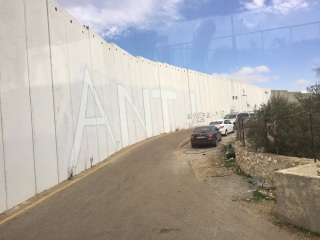




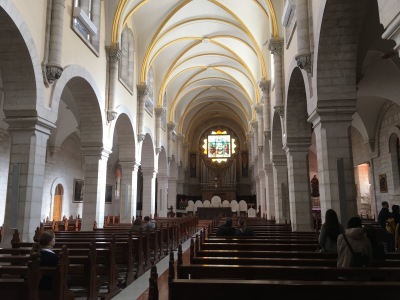


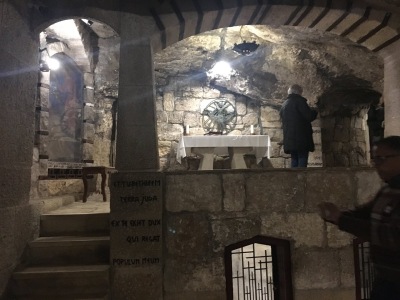


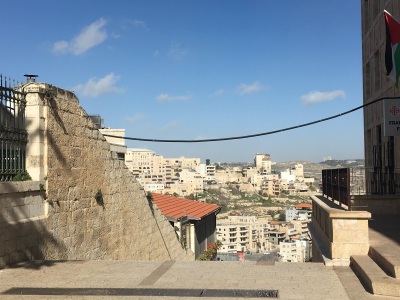


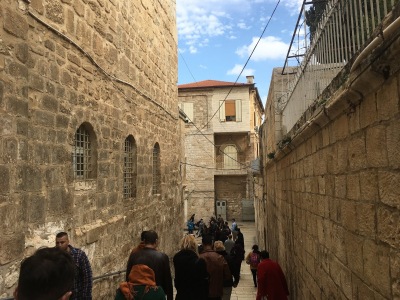


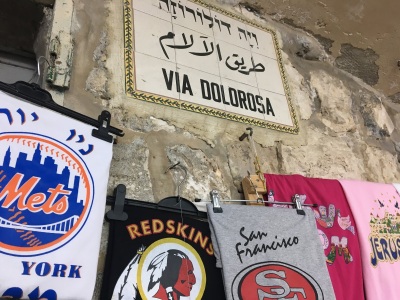

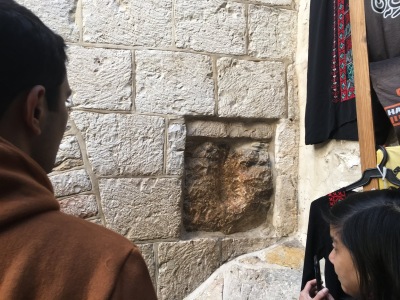






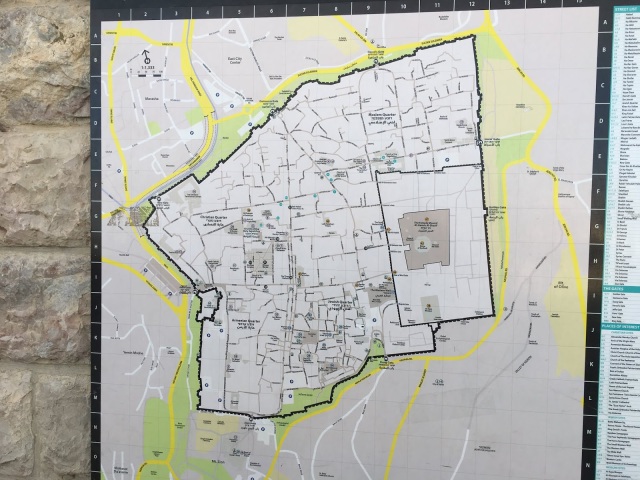
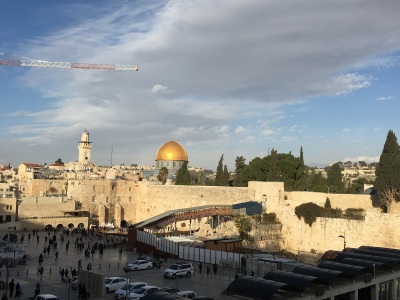



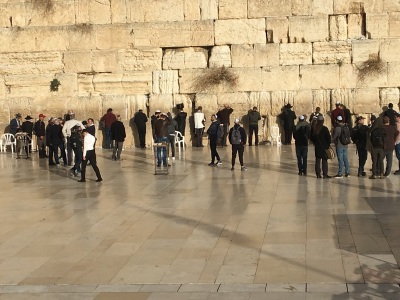





Very informative. Enjoyed reading about the history and culture.
LikeLike
Very well written. Graphic details. One feels witnessing history along with you. Enjoyed reading and tempted to visit Israel. Love,Amita
LikeLike
Reblogged this on Unni-Logs-Travel and commented:
It is difficult to believe that unrest has broken out in Jerusalem. We did feel the tension though all was peaceful and beautiful when we visited the Holy City, holy to all three major religions of the world, Christianity, Islam and Judaism. We first sighted Jerusalem from an Observation Point, high on the hills surrounding the city as we approached from Tel-Aviv. The most striking structure on the Temple Mount in the Old city of Jerusalem is the Golden Dome, Dome of the Rock, Second Temple in Judaism. The Western Wall, also called the Wailing Wall, circles the Dome of the Rock, Second Temple of the Jews and the Al Aqsa Mosque. With restrictions to enter the Temple Mount, this wall is the closest to the Temple and used by Jews to pray. There are separate sections for men and women to pray.
I describe this beautiful Old city in this blog.
LikeLike